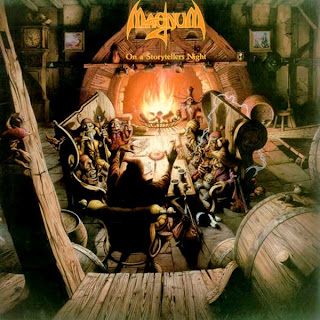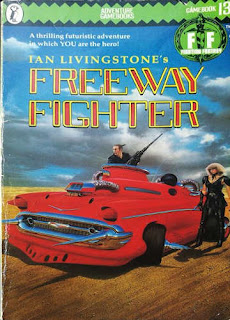2000AD hit the newstands in 1977 and its most popular and longest running character, Judge Dredd debuted in Prog 2. The vision of writer
John Wagner and artist
Carlos Ezquerra, Dredd is a product of late 1970s pop culture, economic stagflation, and social and industrial upheaval.
Judge Dredd: Comic Book Hero (1977 - Present)
22nd Century North America is largely a blasted radioactive wasteland known as The Cursed Earth, humanity has retreated to the safety of a handful of megatropolis known as Mega Cities. The traditional policing structures techniques have been replaced by a system of hardline law enforcers known as Judges who are a combination of policeman, judge, jury and executioner.
Judge Joseph Dredd is the epitomy of a Judge, a single minded human machine entirely dedicated to the task of upholding THE LAW. He is feared and respected in equal measure by his peers and the citizens of Mega-City One and is an example of the Anti-Hero character concept. A peculiar aspect of the character of Judge Dredd is that in an almost unbroken 35 year long run of comic book appearances, his face has never been shown. This gifts him an almost mythical "Everyman" aspect, which coupled with his status as a clone (via a policy of state sponsored genetic experimentation), reinforces the man/machine idea and that he is more a product of his environment rather than humanity.
Judge Dredd: The Games Workshop Boardgame (1982)
 |
| JUDGE DREDD Boardgame (GW) |
In the 80s Ian Livingstone designed the Judge Dredd boardgame to fit in with its expanding range of bookshelf boardgames. Essentially, a cluedo style race around Mega-City One to find and arrest a random collection of perps who were busy commiting random crimes in random locations. Each of the perps were famous faces from the comic escapades of Judge Dredd and had a "Perp Rating" which coupled with the severity or "Crime Rating" of the crime they were committing gave a target number you had to roll against with a pair of d6.
The artwork came straight out of the pages of 2000AD and the board (by Ian Gibson) was a glorious piece of artwork in its own right. Brian Bolland's cover pretty much sums up this very simplistic game, but lots of fun could be had trying to arrest the The Dark Judges for littering or The Angel Gang for Umpty Bagging even though these perp/crime combinations could be a bit bizarre.
This wasn't the last we'd hear from Games Workshop with 2000AD inspired games and they followed up with
Block Mania (and its expansion
Mega Mania) and
Rogue Trooper. I never got round to buying these with my meagre schoolboy resources but they are on my ebay/thrift store wish list.
Judge Dredd: The Games Workshop RPG (1985)
 |
| JUDGE DREDD RPG (GW) Boxed Set |
In 1985 Games Workshop released Judge Dredd RPG written by Rick Priestley (Warhammer, WH40K, Warmaster) and Marc Gascoigne (Blood Bowl, Chainsaw Warrior). As a fan of 2000AD it was almost inevitable that It would become one of my favourite systems and it holds the rare distinction that it's only system which I've bought twice! and still own both copies.
Opening the box reveals 2 books; The Judges Manual (a Players Guide), the self explanatory Game Masters Book, a double sided map to the scenario contained in the gm guide (one side is a meg-way underpass the other a shaggy hall) and a sheet of cardstock counters and standees with a good mix of judges, perps and bystanders.
The game system is very simple being based on two stats
STRENGTH (2-4) and
INITIATIVE (Percentile) and 6 percentile skills;
COMBAT SKILL (CS),
DRIVE SKILL (DS),
TECHNICAL SKILL (TS),
STREET SKILL (SS),
MEDICAL SKILL (MS) and
PSI SKILL (PS). The majority of roll playing is resolved through a simple percentile skill check (with modifiers dictated by the GM). A Combat Round consists of 10 Phases (or Frames) and a character's INITIATIVE dictates how many actions they may make and in which phases, fans of
Steve Jackson's CAR WARS will immediately feel at home. Combat damage results in either STUNS (which temporarily reduce INITIATIVE) or WOUNDS (which temporarily reduce STRENGTH).
 |
| JUDGE DREDD Miniatures by Citadel |
The full range of Justice Department specialisms can be replicated through this 6 skill system but the majority of PCs will most likely be Street Judges.
- TECH Judges have a TS of 40+
- MED Judges have an MS of 40+
- Psi Judges have a PS of 40+
Once a PC has a score of 40+ in any skill (and for every full 10 points thereafter) they may choose a Special Ability offering bonuses to completing actions or for us in certain situations in much the same way as D&D Feats.
The rules light nature means that a session of Judge Dredd is fast paced with the focus on action (just like the comic books), although there is plenty of opportunity through the skills system to have a more detective style game. A healthy mix of rounding up perps and then trying to decipher the clues left behind in their aftermath is usually the best way to go.
Games Workshop supported the system with the hardback
Judge Dredd Companion, a compilation of White Dwarf articles, two campaigns
Judgement Day and
Slaughter Margin, the excellent
Citi-Block floorplans and a 200 figure strong range of miniatures.
Judge Dredd: The Hollywood Movie (1995)
 |
| Sylvester Stallone as Judge Dredd |
It was only a matter of time before Hollywood would turn it's attention to the Dredd franchise and in 1995 the
Judge Dredd movie was released starring Sylvester Stallone. Although the film has been derided by many for it's poor plot and acting, the production, costume design, CGI and miniatures work met with wide spread approval, in fact Stallone looked great as Dredd (until he spoke and took his helmet off!!). In a
recent LA Times interview John Wagner was quoted as saying:
"perhaps that was one of the failings of the first film; they tried to do too much and ended up with not a lot."
Judge Dredd: The Mongoose RPG (2002 - Present)
In 2002 Judge Dredd was acquired by
Mongoose who rebooted the RPG system using the D20 system. Although I have never GM'd or played this version, I do own some of the scenarios and supplements, which are eminently useable and are the usual high quality Mongoose products.
Mongoose were acquired by Rebellion Developments (who had bought 2000AD from IPC Magazines in 2000, coincdence???) and in 2009 they replaced the D20 System with its own Traveller System and also produced a set of
free rules for mass combat in support of its excellent range of 28mm Judge Dredd Miniatures.
Judge Dredd: The Future
March 2012 sees the 35th Anniversary of Judge Dredd and
a new movie starring Keith Urban is released in September. I hope to mark this resurgence of interest in my favourite comic book character by running a game with my Friday gaming group, writing more Judge Dredd blog posts and possibly releasing a PDF or two.






















































